Category: Idaho National Guard
Idaho National Guard’s Helicopter Battalion deploys to Kosovo
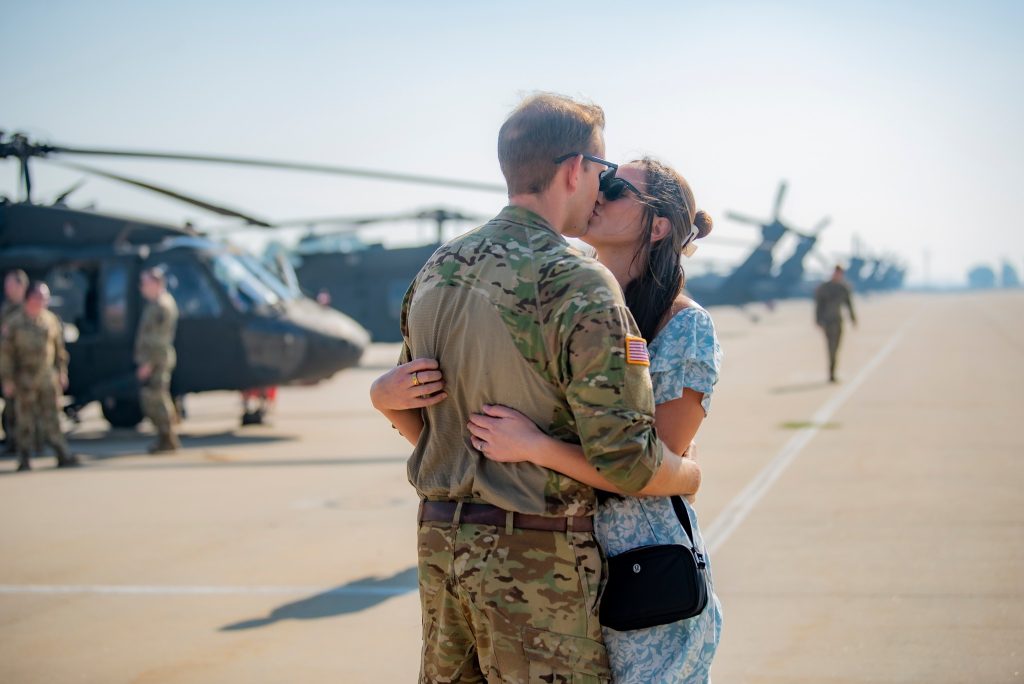
Family, friends and coworkers gathered on Gowen Field on Aug. 22, 2024, to say farewell to Soldiers from the Idaho Army National Guard’s 1st of the 183rd Assault Helicopter Battalion as they left Idaho to prepare to deploy overseas in support of Operation Joint Guardian.
“I have complete confidence that you will carry out this mission successfully and return home safely,” said Maj. Gen. Tim Donnellan, adjutant general of Idaho and commander of the Idaho National Guard. “You are among the finest Soldiers and your commitment to duty and to each other will see you through. We will continue to support you from here, and we look forward to welcoming you back home with pride and honor.”
Several UH-60M Black Hawk helicopters and more than 100 personnel deployed to Texas to receive approximately 30 days of additional training before departing to Kosovo for an 11-month rotation in support of the NATO peace-keeping mission. The unit has anticipated this mission since October of 2022 and the battalion’s Task Force Sawtooth has trained for the past 18 months in preparation for this mobilization.
Operation Joint Guardian is a joint mission under the United States European Command. Soldiers will focus on training and supporting allied partners.
“The Soldiers of Task Force Sawtooth have been working and training diligently over the past 18 months for this deployment,” said Lt. Col. Bryan C. Reid, 1st of the 183rd AHB commander. “Leadership is proud of what we have accomplished, we are focused on the mission ahead and we are ready to go.”
This deployment is the first time since 2003 that the unit has deployed to the region. The 1st of the 183rd Assault Helicopter Battalion previously deployed to Bosnia in 2002-2003 in support of a humanitarian relief aid mission and to Southwest Asia in support of Operation Enduring Freedom in 2006-2007. Most recently, the unit conducted a large-scale exercise in Guatemala in 2019, training with the Guatemalan Armed Forces as part of a humanitarian effort to help build schools and medical facilities while gaining critical experience working with foreign military partners.
“I have confidence in your readiness,” said Donnellan. “You’ve undergone extensive training and are equipped with the best tools and knowledge available. Your dedication to this mission is clear, and I know you will carry it out with the professionalism and excellence that defines the 1st of the 183rd AHB.”
Idaho National Guard OIF Vets Reunite After 20 Years
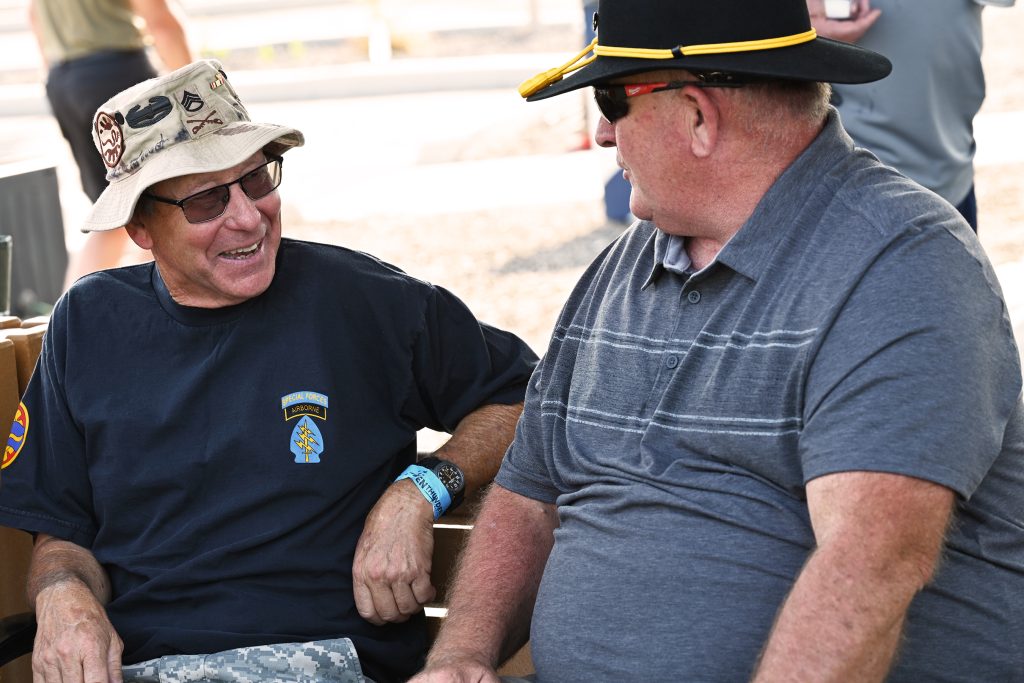
Veterans who served during the largest deployment in Idaho National Guard history gathered for a three-day 20th anniversary reunion in Boise this weekend. The weekend included battalion gatherings, a family day that included a live concert performed by the 25th Army Band and a remembrance ceremony in honor of those who made the ultimate sacrifice.
On Saturday, Dirk Kempthorne, former U.S. Secretary of the Interior and Idaho governor, was among those who addressed current and former members of the 116th Brigade Combat Team, which deployed to Iraq in support of Operation Iraqi Freedom in 2004. Kempthorne was serving his second term as governor when the unit deployed.
“To you members of the 116th, I will always be proud and inspired to stand with you,” said Kempthorne. “You have served this state with incredible bravery, courage and achievement. You have established a whole new history for Idaho about what our citizens, when called upon to serve this nation, this state and when necessary, to go to battle, will do and accomplish.”
Idaho Lt. Gov. Scott Bedke was also present, delivering a proclamation from current Idaho Gov. Brad Little to the stage declaring Aug. 10 as a day of recognition for the unit across the state.
Retired Brig. Gen. Alan C. Gayhart, who served as the unit’s commander throughout the deployment, said the unit was bolstered by Guardsmen from 15 states and included unique capabilities that were key to mission success.
“There was a reason the 116th Brigade was selected to serve in this massive area of over 10,000 square miles and three million people,” said Gayhart. “The combination of your military and civilian skills and capabilities were those needed in this troublesome area. It was clear that you were the warriors best suited to not only fight the insurgents in combat, but as citizen-Soldiers you were instrumental in the establishment of government, civic, economic, agricultural and other functions critical to peace and prosperity in this area.”
First Warrant Officer Candidates in Nation Graduate from Home Station Schools
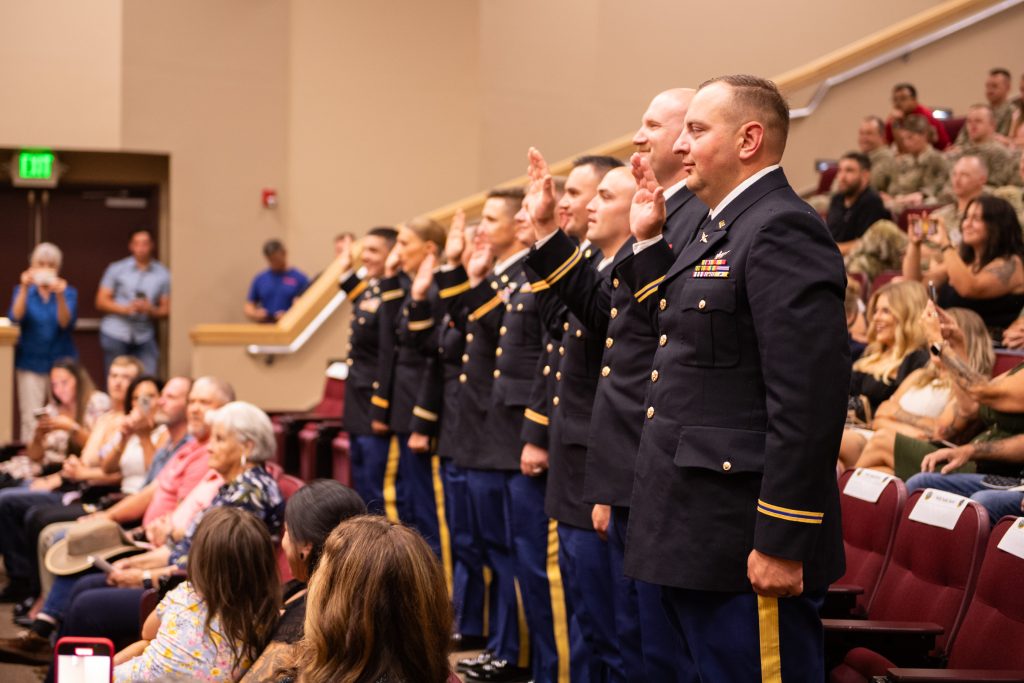
Eight Idaho Army National Guard and one Utah National Guard warrant officer candidates were among the first in the nation to graduate and pin on their new ranks in their home state or Regional Training Institute, on Aug. 4 under a revamped training timeline being implemented to the phased commissioning program across the country.
The graduates from the 2nd Modular Training Battalion 204th Regiment Warrant Officer Candidate School, Class 24-001 are: Warrant Officers Jesse J. Bliss, Simonne A. Boice, Tori J. Frederick, David G. McKenna, Devon K. Middleton, Phillip D. Pallister, David A. Reese, Jared A. Scott and Cade D. Terry.
Historically, National Guard warrant officer candidates who choose to commission through the phased program have begun Phase I of their Warrant Officer Candidate School training at RTI’s located on their home station or regionally over the course of five drill periods. Phase II of the training took place over the course of two weeks at Camp Atterbury, Indiana, and candidates graduated and pinned on their new rank there.
Chief Warrant Officer 4 Chad Thomas, commander of the Idaho National Guard’s WOCS, said the change reverses the phases, allowing candidates to begin their training at Camp Atterbury and complete WOCS at their home station or regional RTI. It also reduced the number of training days in the accelerated course hosted at Fort McClellan, Alabama, from 28 to 24. Thomas said the modifications came about as the result of input received during a two-day Reserve Component Warrant Officer Candidate School Regional Training Institute Workshop. During the workshop, more than 80 personnel from all 27 RTI’s collaborated with senior leadership from the National Guard Bureau to modernize the program.
Thomas said the Idaho National Guard is also working to keep attrition low by including a pre-WOCS course to prepare candidates for Phase I prior to reporting to Camp Atterbury.
“This was the perfect class, said Thomas. “They really gave the cadre a lot of grace, the candidates understood the changes and it was a really good experience.”
Chief Warrant Officer 5 Edward Barnowski, Idaho’s command chief warrant officer, said the changes allow home state units to personalize the course, focus on local history and make graduation celebrations more accessible to family members.
“The new schedule and POI (program of instruction) has really opened things up for us here and allows us to have culminating events,” said Barnowski.
The Idaho candidates participated in a staff ride to Minidoka, a World War II-era Japanese national internment camp near Twin Falls, hosted a mentorship dinner and took part in a victory run on Gowen Field.
“It’s just a more personable experience for the candidates,” he said. “There were so many families at the graduation. They were really excited to see their Soldiers graduate from this course, and they never got that opportunity before.”
124th FW Airmen participate in weapons system evaluation program exercise at Hill AFB
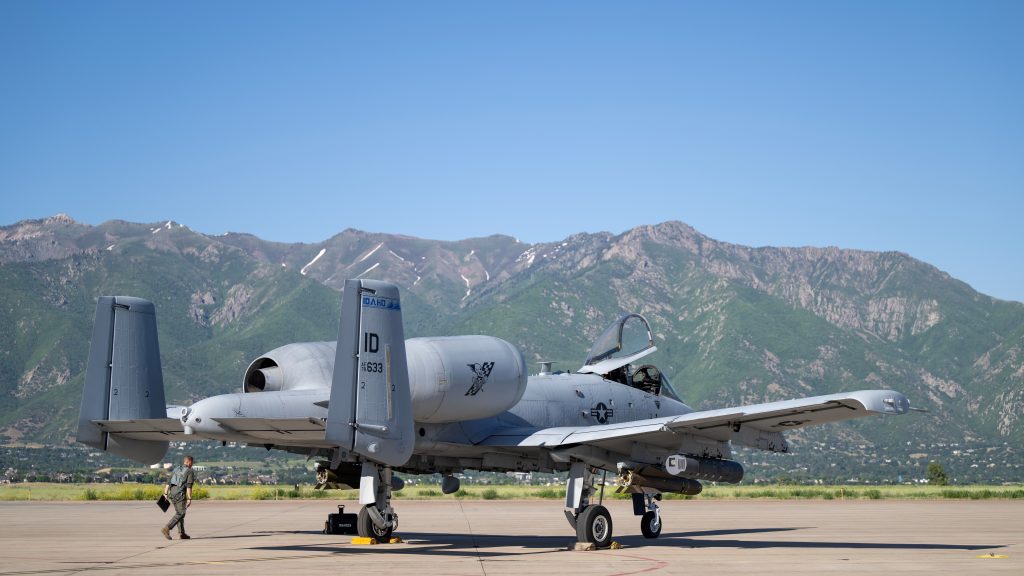
Airmen from the 124th Fighter Wing, Gowen Field, Boise, Idaho, participated in a weapons system evaluation program exercise at Hill Air Force Base, Utah, June 6-14, 2024.
The program is designed to test the employment of various live munitions and requires the efforts from various Air Force specialty codes, but focuses on the building, loading and employment of these munitions.
The use of lethal force is a serious burden and responsibility, requiring proficiency from everyone involved.
“This is a weapons training exercise,” said Staff Sgt. Alyssa Johnson, an aircraft armament systems technician with the 124th Aircraft Maintenance Squadron. “The focus is on how ammo builds munitions, how weapons loads them, and how the pilots drop them. The inspectors are making sure we are proficient at what we do.”
This is a unique and critical training event for Idaho Air Guardsmen.
“We don’t get a lot of opportunities like this in the Idaho Guard, because of where we’re stationed,” said Johnson. “Working with live munitions is critical for us.”
WSEP provides Airmen with challenges and opportunities.
“This has been a mini deployment,” said Tech. Sergeant Charles Updegraff, the senior munitions inspector for the 124th Munitions Flight. “We’ve worked long days and in a location with limited access to the equipment we normally have at home, challenging how we normally work.”
Updegraff went on to say that working through challenges prepares Airmen for real-world deployed scenarios, especially when looking at a near-peer fight. Allowing younger Airmen the opportunity to demonstrate their job proficiency and thinking on their feet, in a new and fast-paced environment.
Ammo Airmen weren’t the only ones to experience unique training opportunities.
“We had to drive all the way to the Dugway Proving Ground due to an issue with a stuck munition,” said Johnson. “You always hope that things go well, but sometimes things don’t. I was able to train on what we might experience when deployed, making sure that my crews and pilots are safe.”
Beyond the individual shop aspect of WSEP, ammo and weapons Airmen must work together to provide warheads for pilots.
“Here things are back-to-back and go, go, go,” said Johnson. “When we go downrange, ammo builds munitions; we load them, and the pilots drop them. This training prepares all of us to be successful.”
Johnson had one piece of advice when working to prepare to deploy, “There’s going to be days where things are good, and everything goes off as planned. Then there will be days where it’s more difficult. Maybe you don’t want to get out of bed, maybe it’s 100 degrees out, and you add another 30 degrees being on the tarmac. But being able to embrace the good and bad, and focus on the mission with your peers is amazing. We all get to build off each other’s energy and be able to build each other up. We’re exhausted, yes. We’re tired, but we help each other out, so that way, we’re all good in the end.”
Ultimately that is the most important takeaway when preparing for a future fight, working together, building each other up, and getting the mission done.
Idaho Army National Guard rescues injured hiker near Stanley
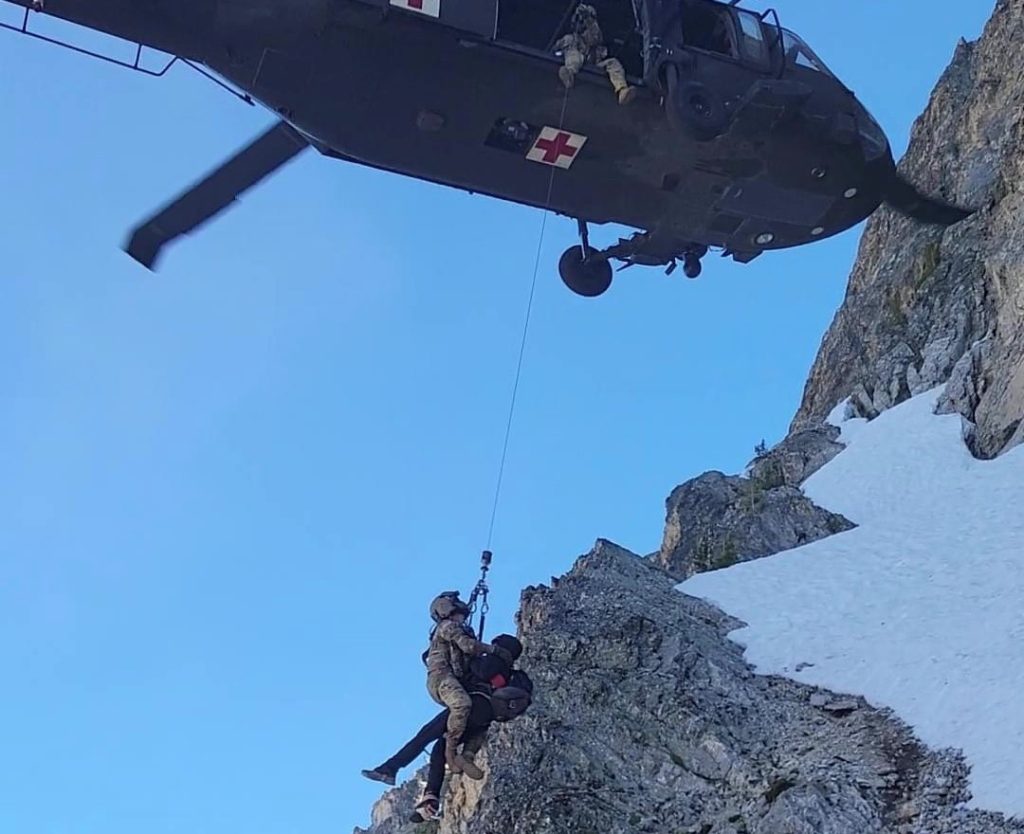
The Idaho Army National Guard’s State Aviation Group assisted Custer County Search and Rescue with the rescue of an injured hiker July 6 on Thompson Peak of the Sawtooth Range, outside of Stanley, Idaho.
The hiker, a 19-year-old male, suffered an ankle injury following a fall while rock-climbing near the mountain range’s highest peak, located approximately 75 miles outside of Boise.
“Our crew did an incredible job under some very challenging environmental conditions,” said Capt. Katherine Smith, commander of Det. 1, Company G 1st of the 168th Aviation Regiment. “The rescue required a great deal of crew coordination, as well as teamwork with the highly proficient extraction team from the Custer County Sheriff’s Office.”
The flight crew consisted of pilots Chief Warrant Officer 3 Theron Cameron and Chief Warrant Officer 3 Brennan Hoover; two crew chiefs, Sgt. Adam Brundy and hoist operator Sgt. Jessica Adamson; and one medic, Sgt. 1st Class Jared Gilstad.
The patient was initially located on a shear rock wall under a ledge. After locating him, crew members determined that there was no way to safely insert a hoist rider and extract him. The flight crew then flew to the Stanley Airport and picked up a five-person technical rope rescue team from Custer County’s search and rescue team.
“We were able to inert the team about 300 meters away from the patient using a two-wheel landing,” said Chief Warrant Officer 3 Theron Cameron, an Idaho Army National Guard UH-60 pilot.
The rescue team roped to the patient and relocated him to more favorable recovery site, where Adamson was able to lower Gilstad safely onto the ground near him. Gilstad quickly secured the patient and Adamson hoisted the pair back into the aircraft while the pilots kept the aircraft stable in challenging conditions.
“Due to the reduced power margins caused by altitude of more than 10,300 feet, the uneven terrain and the location of the extraction site, the aircrew was forced to pay extremely close attention to the aircraft limitations,” said Smith. “Lack of situational awareness in these types of situations could lead to a loss of lift or even rotor drop, requiring the aircrew to have to execute an emergency procedure to maintain stable flight.”
The flight crew transported the patient to the Stanley Airport, where he was transferred to civilian medical care.
State, Guard Conduct Cyber Discovery 2024
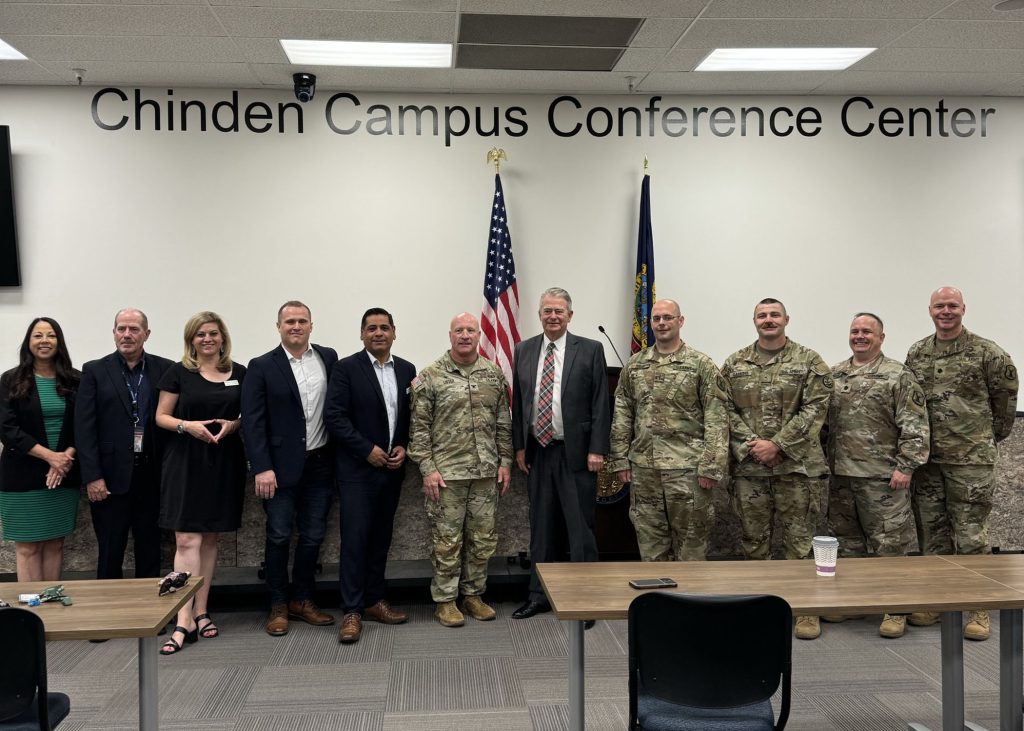
The Idaho National Guard and the Idaho Office of Information Technology Services recently hosted Cyber Discovery 2024 at the state’s Chinden Campus in Boise. Cyber Discovery is a regional cyber exercise focused on security operations, incident tracking and response. The exercise takes place within the framework of the Department of Defense’s Innovative Readiness Training program, enhancing its training value to both the state and Idaho National Guard while saving taxpayer dollars.
“One of the biggest benefits to conducting the training like this is that there’s minimal cost to either party,” said Col. Dan Lister, chief information officer for the Idaho National Guard’s Office of Information Management. “If you were to simulate this, you would be into the millions of dollars.”
During the exercise, 26 Guardsmen from Alaska, Idaho, and South Dakota Army and Air National Guards played the role of cyber threat actors while a team of 19 ITS employees, three Boise State cyber security program students and three Idaho Army National Guardsmen formed a defense team.
“We’re training to rapidly integrate Guard members for that cyber 911 that could come at any time,” said Chief Warrant Officer 4 Jerred Edgar, a defense cyber operations element officer with the Idaho National Guard. “We’re able to use the IRT to form and shape that response and rehearse it with our partners.”
Edgar said the ITS blue team made significant strides in threat detection, synchronized actions, and teamwork over last year’s performance in the exercise.
“Everything we do in these environments produces tangible results that the state can use to reduce cyber threats,” he said. “It’s process improvement, it’s building on efficiencies and identifying effective tools.”
The exercise provides exceptional training value to Guard members as well, said Lister.
“They’re training in a large-scale, real-world environment,” he said. “It really can’t be simulated and it’s very complementary to the skill sets they will use at various military echelon levels wherever they go in the world.”
Brig. Gen. Shannon Smith Selected as Assistant Adjutant General – Air
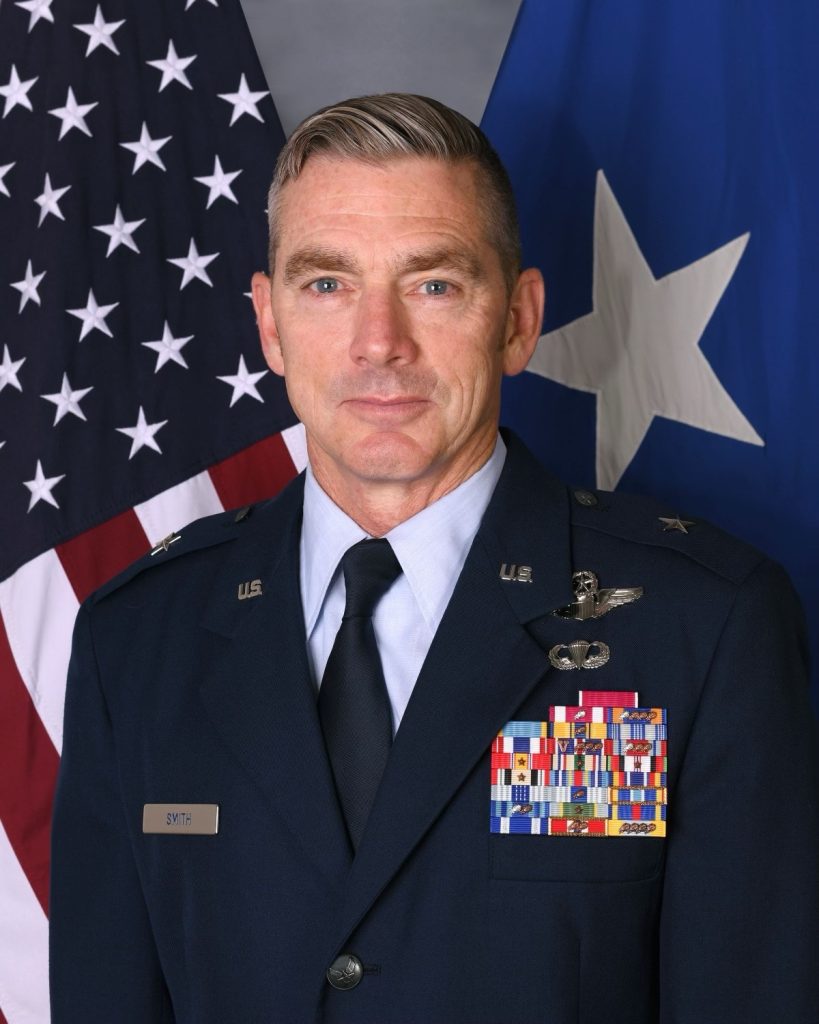
Maj. Gen. Timothy Donnellan is pleased to announce the selection of Brig. Gen. Shannon “Sinjin” Smith as the commander of the Idaho Air National Guard and assistant adjutant general- Air.
Smith replaces Donnellan in the same roles following Donnellan’s promotion to major general and appointment as adjutant general of Idaho and commander of the Idaho National Guard.
Smith previously served as the chief of staff of the Idaho Air National Guard, commander of the 113th Wing in Washington D.C., and commander of the Idaho Air National Guard’s 124th Fighter Wing. Smith has served in the Air National Guard since April 2002, following a decade in the active duty Air Force. As a pilot, he has logged more than 4,200 flight hours in his career and deployed to Afghanistan in support of Operation Enduring Freedom.
As the 124th Fighter Wing commander, Smith guided the wing through supporting the state’s response to the the COVID-19 pandemic while successfully conducting the wing’s second largest deployment in its history. During that 2020 deployment, the 124th Fighter Wing supported four named operations across 18 different locations, flying nearly 600 combat hours with no mishaps and a 100 percent weapons hit rate with no collateral damage.
Maj. Gen. Timothy J. Donnellan becomes Idaho’s 26th adjutant general
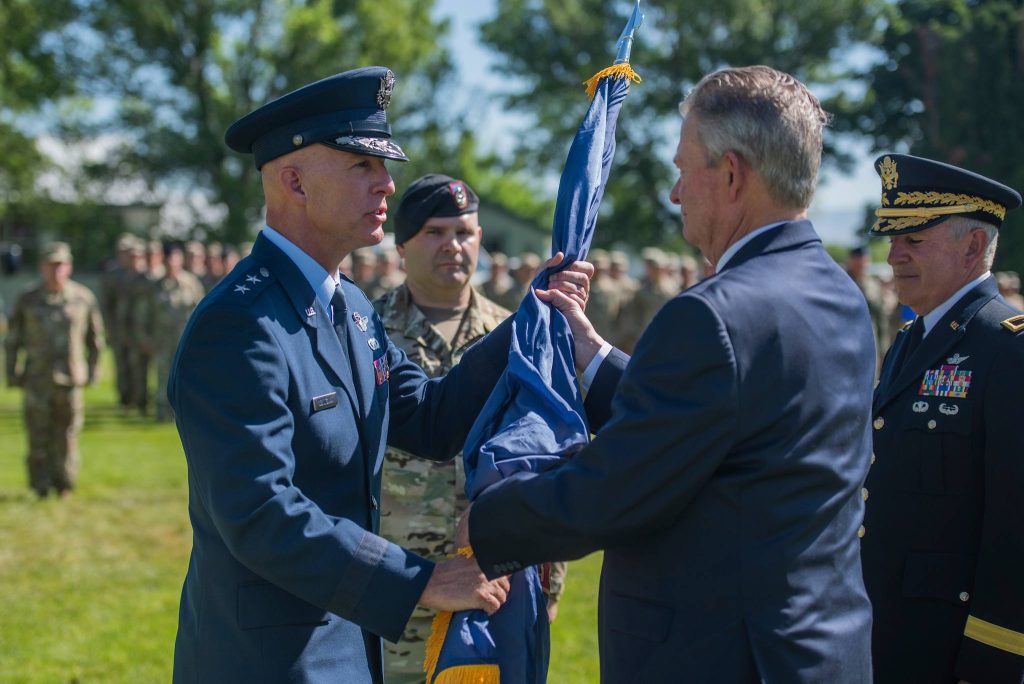
Guardsmen, Volunteers Clean Up Birds of Prey National Conservation Area
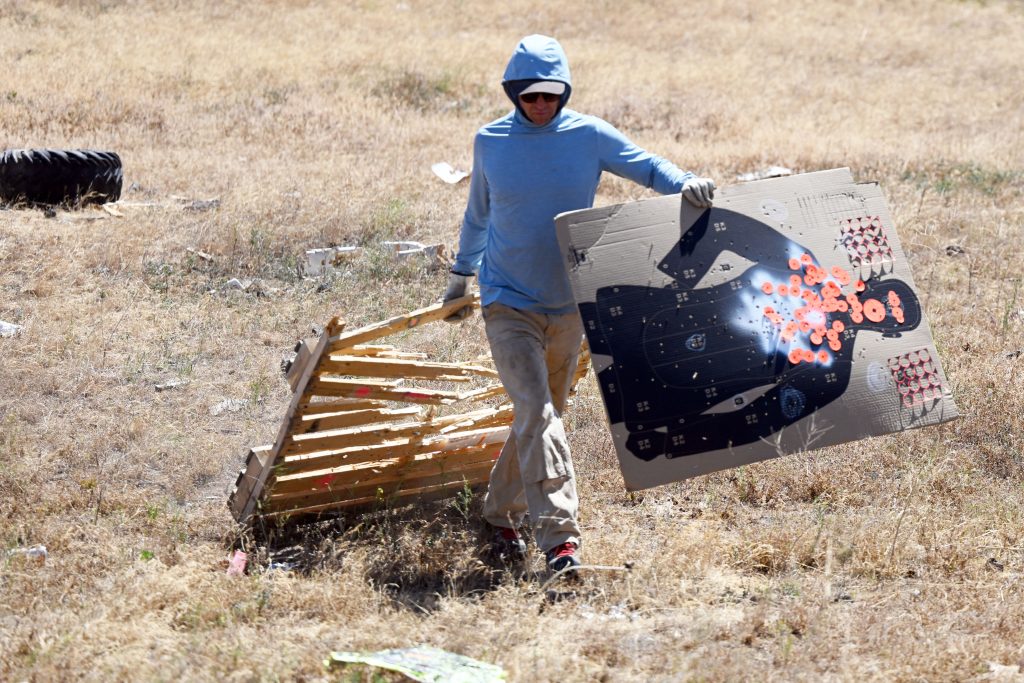
Idaho National Guard Participates in 13th Annual Return of the Boise Valley People
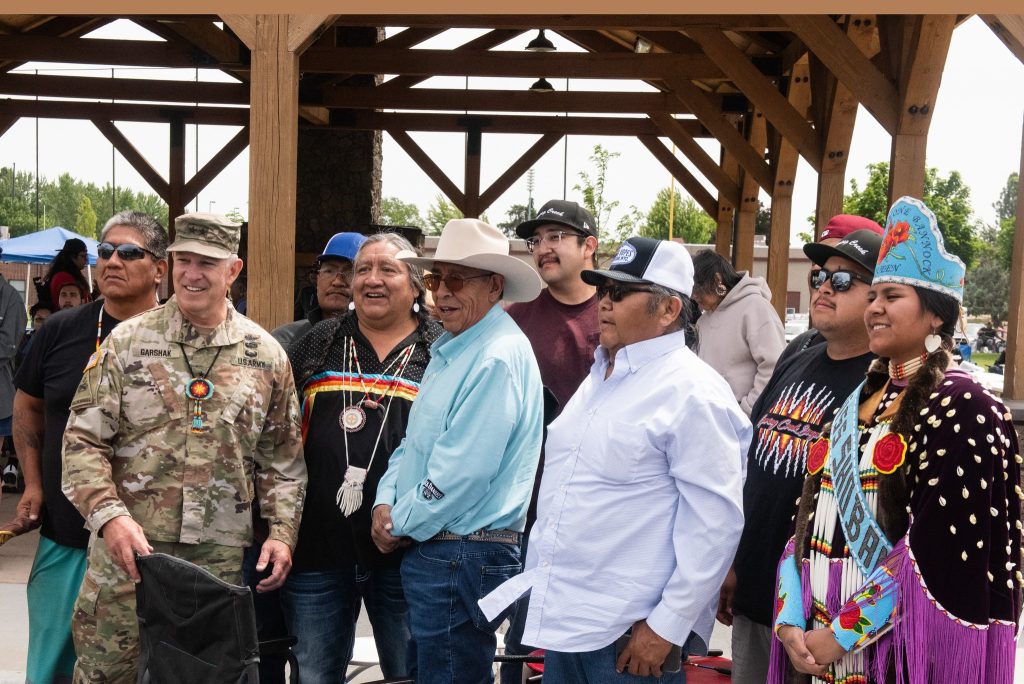
 Official Government Website
Official Government Website